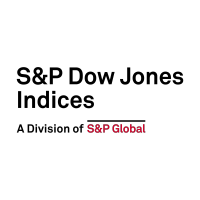Tag Archives: Australia
Australian Mid Caps: A Sweet Spot for Diversification and Historical Outperformance
The S&P/ASX MidCap 50 was up 5.35% in February, outperforming the S&P/ASX 50—which posted 0.25%—by more than 5%. This was the largest relative outperformance of the mid-cap segment compared to large caps in a single month since October 2008. A closer look at Australian mid caps, as measured by the S&P/ASX MidCap 50, shows the…
- Categories Equities
- Other Tags
- Categories
- Equities
- Other Tags
The Importance of Profitability in Australian Small Caps
It has long been evident that small-cap companies with a track record of generating earnings have outperformed relative to their peers. Profitability matters for small-cap companies, and the S&P/ASX Small Ordinaries Select Index was launched in 2018 to provide a measurement of these companies in Australia. The S&P/ASX Small Ordinaires Select Index—which includes a profitably…
- Categories Equities
- Other Tags
Exploring Dividends Down Under
What’s driving demand for index-based access to dividends in Australia? S&P DJI’s Jason Ye surveys the dividend landscape in the Australian market and examines how market participants are using indices in the search for yield.
- Categories Factors
-
Other Tags
Ausbiz, Australia FA, buy-write, covered call, Dividend, dividend income, dividend opportunities, dividends, factors, factors and dividends, high dividend, income strategies, Jason Ye, options, S&P/ASX 200, S&P/ASX 200 High Dividend Index, S&P/ASX 300, S&P/ASX Sustainability Screened Dividend Opportunities Index, yield
- Categories
- Factors
- Other Tags
- Ausbiz, Australia FA, buy-write, covered call, Dividend, dividend income, dividend opportunities, dividends, factors, factors and dividends, high dividend, income strategies, Jason Ye, options, S&P/ASX 200, S&P/ASX 200 High Dividend Index, S&P/ASX 300, S&P/ASX Sustainability Screened Dividend Opportunities Index, yield
S&P/ASX All Technology Index Boosted by Tech Turnaround
Following a poor 2022, the Information Technology sector has proven itself to be the outstanding performer in Australian equities in 2023. Despite rising interest rates, higher bond yields and weakening consumer confidence, market participants have still seen value in the Tech sector thus far in 2023. Tech’s turnaround has benefited the S&P/ASX All Technology Index,…
- Categories Equities
- Other Tags
Connecting the S&P/ASX 200 to U.S. Equity Icons
Many market participants have a “home bias,” typically having larger exposures to domestic securities than would be determined by their representation in the global opportunity set. Australia is no exception: compared to Australia’s 2% weight in the S&P Global BMI, Australian investors allocated an estimated 49% of their total equity allocation to domestic stocks at…
- Categories Equities
- Other Tags
S&P/ASX Small- and Mid-Cap Indices: Differentiators in a Large-Cap Dominated Market
Large-cap, Australian-listed companies have continued their robust 2022, outperforming the small- and mid-cap segments YTD as of April 30, 2023. However, a fast-changing economic environment may support considering small and mid-cap indices in Australia. The range of returns for Australian-listed companies in 2022 was among the widest seen in 20 years. Broad dispersion was exhibited…
- Categories Equities
- Other Tags
Minor Impact to Headline S&P/ASX Indices from GICS Changes
Revisions to the Global Industry Classification Standard (GICS®) structure were implemented at the March S&P/ASX rebalance. The changes affect the GICS structure at all levels and involve a number of intra- and inter-sector changes for companies within the S&P/ASX 200 and S&P/ASX 300. Inter-sector changes are the reclassification of constituents to a different sector under…
- Categories Equities
- Other Tags
- Categories
- Equities
- Other Tags
First Islamic Indices Based on S&P/ASX Series Launched
S&P DJI is launching its first S&P/ASX Shariah Indices, which aim to track the performance of Shariah-compliant stocks in the S&P/ASX 200 and the S&P/ASX 300. This launch comes in the context of increased interest in the Muslim community for Shariah investing in Australia. The Muslim community in Australia accounts for 3.2% of the population,…
Income Generation and the S&P/ASX BuyWrite Index
In my last blog, we discussed the performance characteristics of the S&P/ASX BuyWrite Index. We will now focus on the income-generating feature of this index. As a reminder, a covered call strategy involves selling a call option against an asset that is already owned by the option writer. A systematic long-term covered call strategy generates…
- Categories Multi-Asset
- Other Tags
- Categories
- Multi-Asset
- Other Tags
18-Year Performance of the S&P/ASX BuyWrite Index
The volatile and unpredictable nature of the stock market is characterized by periods of ups and downs. Covered call option writing is a strategy aimed at generating income and mitigating loss, particularly in bear market environments. A covered call (or “buy-write”) strategy involves selling a call option against an asset that is already owned by…
- Categories Multi-Asset
- Other Tags
- Categories
- Multi-Asset
- Other Tags













































